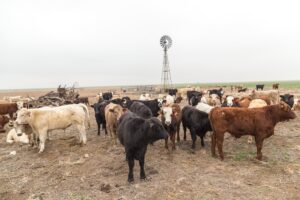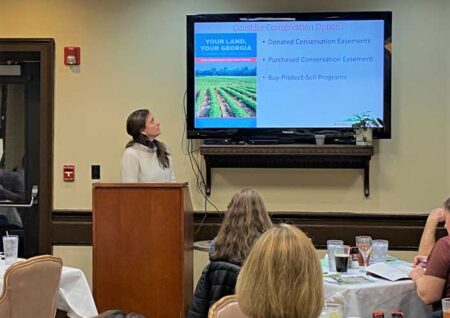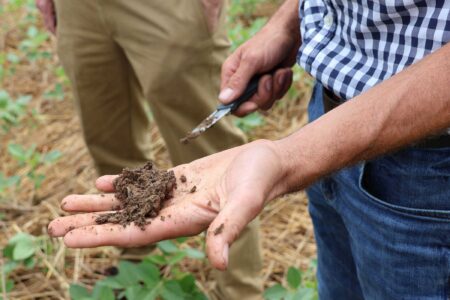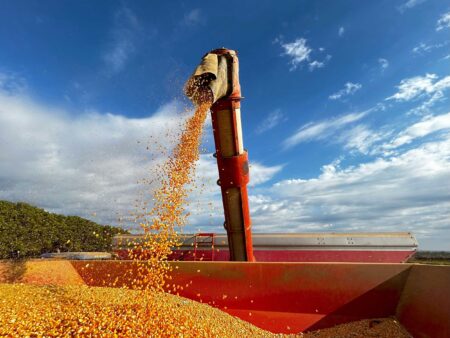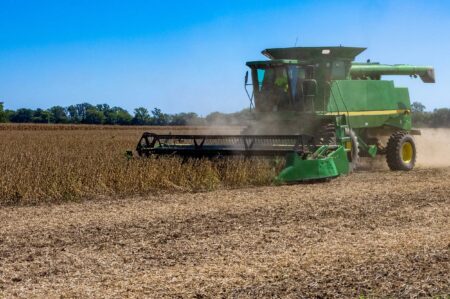FULTON COUNTY, Ohio — Varroa mite wiped out almost 60 percent of the commercial beekeeping force in America during the 2024-25 winter, according to recent data from U.S. Department of Agriculture scientists. And as solutions are being accelerated to protect the pollination services that feed the American food system, the industry is increasingly pointing to a need for information and better-informed management.
In June, bee scientists at the USDA’s Agricultural Research Service bee research lab in Beltsville, Maryland, identified the Varroa mite as the culprit. The parasitic pest spreads viruses that attack hive health and has been a decades-long threat to pollinators. The issue created an estimated $600 million in financial loss and affected 1.7 million colonies, the agency said.
Collapse events are not new, nor is hive loss. But this year, Varroa mite’s resistance to amitraz, a viable acaricide registered since the 1970s, has left a large percentage of commercial growers at a loss.
It was identified at the beginning of 2025, when pollinators were preparing colonies for California’s almond pollination. A preliminary analysis of the 2024-2025 U.S. Beekeeping Survey by Auburn University indicates an estimated hive loss of 55.6 percent, the highest since 2011 and 14.2 percentage points higher than the running 14-year average annual loss rate.
“Keeping bees alive and well is becoming increasingly harder with every year that passes,” said Itai Kanot, a beekeeper and chief growth officer of BeeHero, an end-to-end service provider for precision pollination in California.
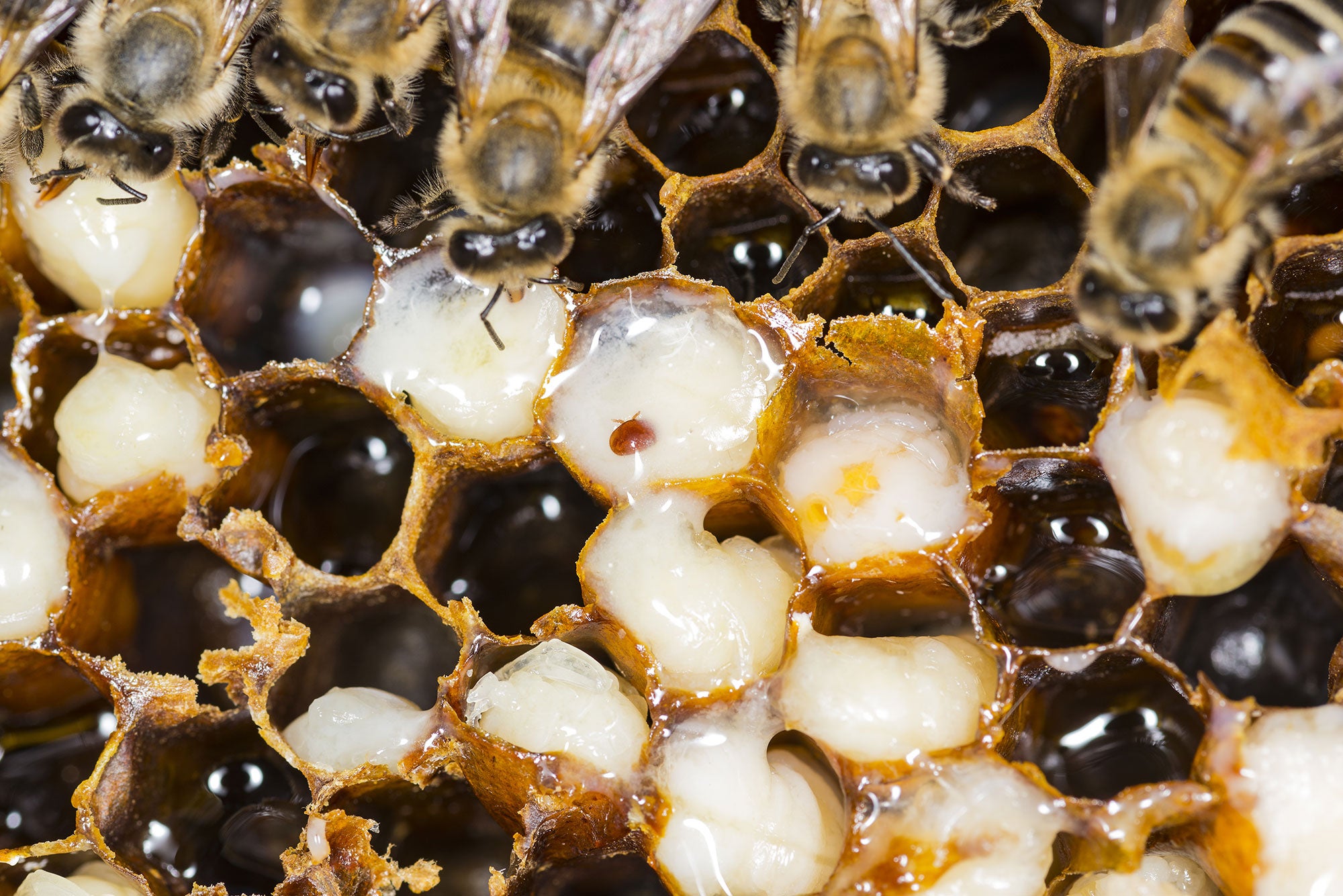
Commercial pollination practices have grown in recent years, as more threats to native pollinators emerge. Colonies start the year in California with almond pollination, then move into the Pacific Northwest to pollinate high-value stone fruit, vegetables, and seeds before ending up on the East Coast.
For honey bee parasites like Varroa, the industry’s success is control management, not eradication. “That is a dream that has long gone,” Kanot said.
Identified mites were found mainly in commercial operations, but beekeeping operations of all sizes experience hive loss. Hobbyists raise bees for localized honey, while larger sideline operations, hundreds to thousands of hives, become regular suppliers for their communities. Commercial operations haul tractor-trailer loads of bees to fruit and vegetable pollination sites around the country, earning most of their profits from pollination services, not honey itself.
Control measures now for Varroa include rotating through non-amitraz acaricides, sterilizing equipment with alcohol or fire, and isolating ailing colonies to prevent mites from spreading. Small keepers have used oxalic acid vaporization as a miticide alternative, as well.
There is also a push to approve the U.S. Environmental Protection Agencies ‘ proposed registration of Vadescana as a new active ingredient to control Varroa mites in honeybee hives.
The National Association of State Departments of Agriculture, which commented in support of its approval, described the Varroa mite as, “Without a doubt … the most significant threat facing bee health, honey production and pollination services.”
A problem for all bees
Hive loss is normal, explains Ohio beekeeper Roger Myers, a board member of the Ohio Beekeepers Association. National averages, according to the Apiary Inspectors of America, are 41.4 percent, the 14-year average annual loss rate.
“The Varroa mite is our number one enemy.” He describes them as a speck of pepper on the bees that transmits somewhere around 30 to 40 different viruses. “It makes all beekeepers a little nervous, especially if you know you’re doing it more above a hobby level.”
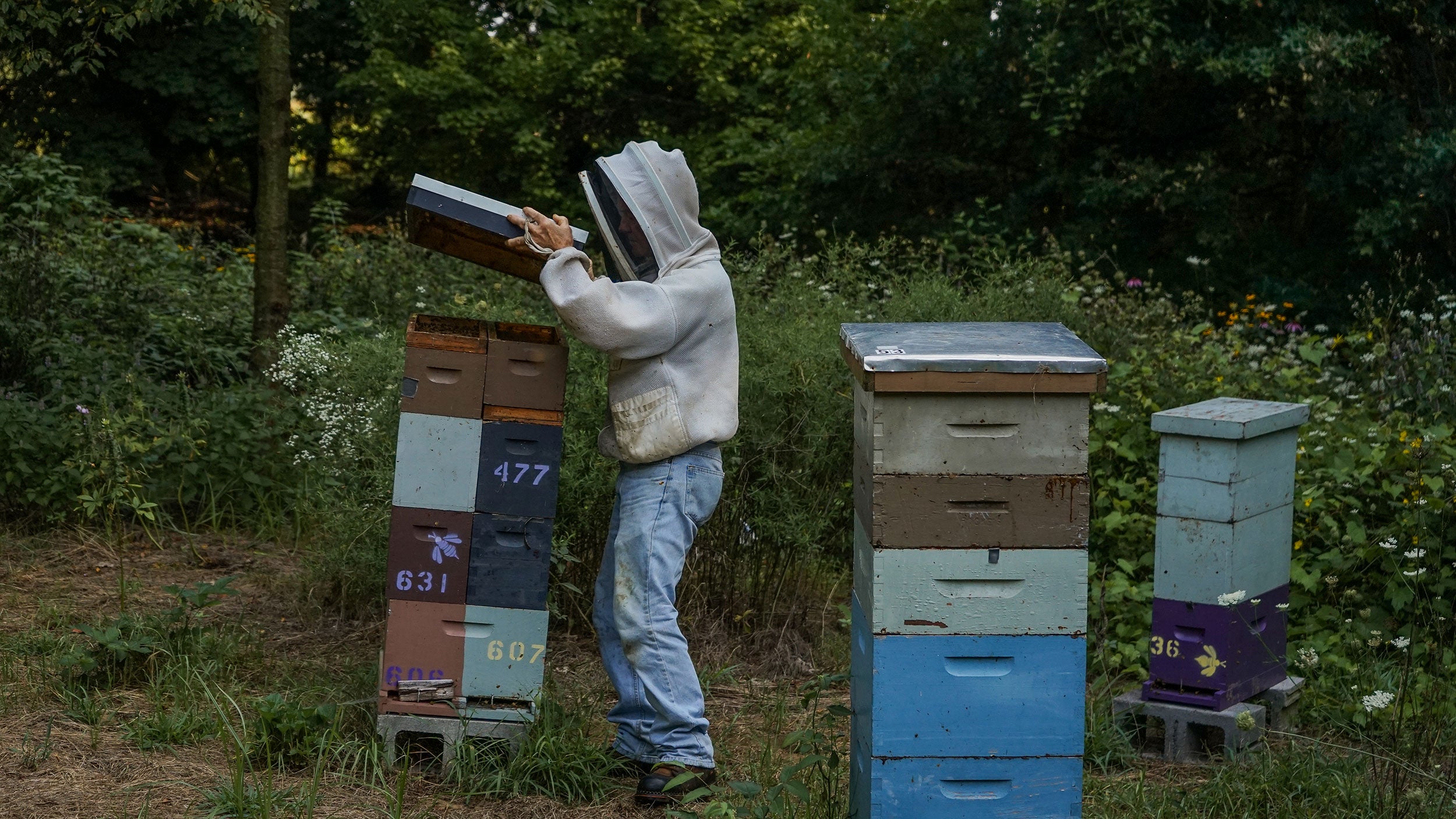
Myers’ 100 bee hives operate at his brother’s orchards and are located across many counties. His honey gets sold around northwest Ohio. But when the honey is harvested and the season ends, it’s difficult to observe or pinpoint what went wrong or changed.
“There are millions of possibilities to observe,” he said.
Brood diseases, infected larvae and pupae, have challenged beekeepers for more than a century, but the Varroa mite, introduced only in the late 20th century, has become the industry’s most devastating foe.
Bees can move between hives, spreading diseases, and toxins collected from the environment. Mites attached to them work as vectors moving viruses too. It’s a biosecurity issue, he explains.
“We can’t keep our bees locked in a barn like other livestock can be,” he explained. “I mean, look at the bird flu with chickens, and they’re locked up in one of the most biosecure places that we have, but they still get sick.”
When a hive becomes unhealthy, many overlapping factors can contribute to its decline. Bacterial brood diseases such as American foulbrood (AFB) or European foulbrood (EFB) are sometimes difficult to diagnose without laboratory testing, since early symptoms resemble other stressors. And Colony Collapse Disorder (CCD), once widely reported in the mid-2000s, is not itself a brood disease but rather a syndrome in which adult worker bees disappear, leaving behind the queen and brood, according to Oklahoma State University Extension.
Hive losses are especially common in winter, when reproduction slows and colonies rely heavily on the strength of the remaining adult population. If hives enter winter already weakened by disease or poor nutrition, they have fewer resources to recover. The presence of Varroa mites further exacerbates the problem, by adding a parasite to the hive spreading viruses such as Deformed Wing Virus (DWV). These combined pressures can push a struggling colony past the point of recovery, resulting in collapse.
“A lot of beekeepers don’t understand, you must get the bees clean and healthy before fall even begins.” As a sideline producer, Myers was not impacted by high populations of Varroa this wave, but that does not mean movements like this do not impact smaller producers.
In 2006, identified by Myers as when colonies first started collapsing, “We got a lot of research money, a lot of new knowledge into beekeeping, and we asked ourselves, maybe we need to change some of our practices that we were doing,” he said.
They learned with research that wax is hygroscopic, meaning any pollutants that the bee brings into the hive get absorbed into the wax.
“So now we try to rotate that brood area comb every five years,” Myers said.
But that learning is slowing down, and the support to learn new apiary science, like brood disease and Varroa mite virus treatment, seems to only precede a catastrophe, he explained.
Beekeepers know their value, but outwardly, “We seem to be like the redheaded stepchild of agriculture,” he said. “It always happens after the big alarm happens. You know, when all the bees are dying.”
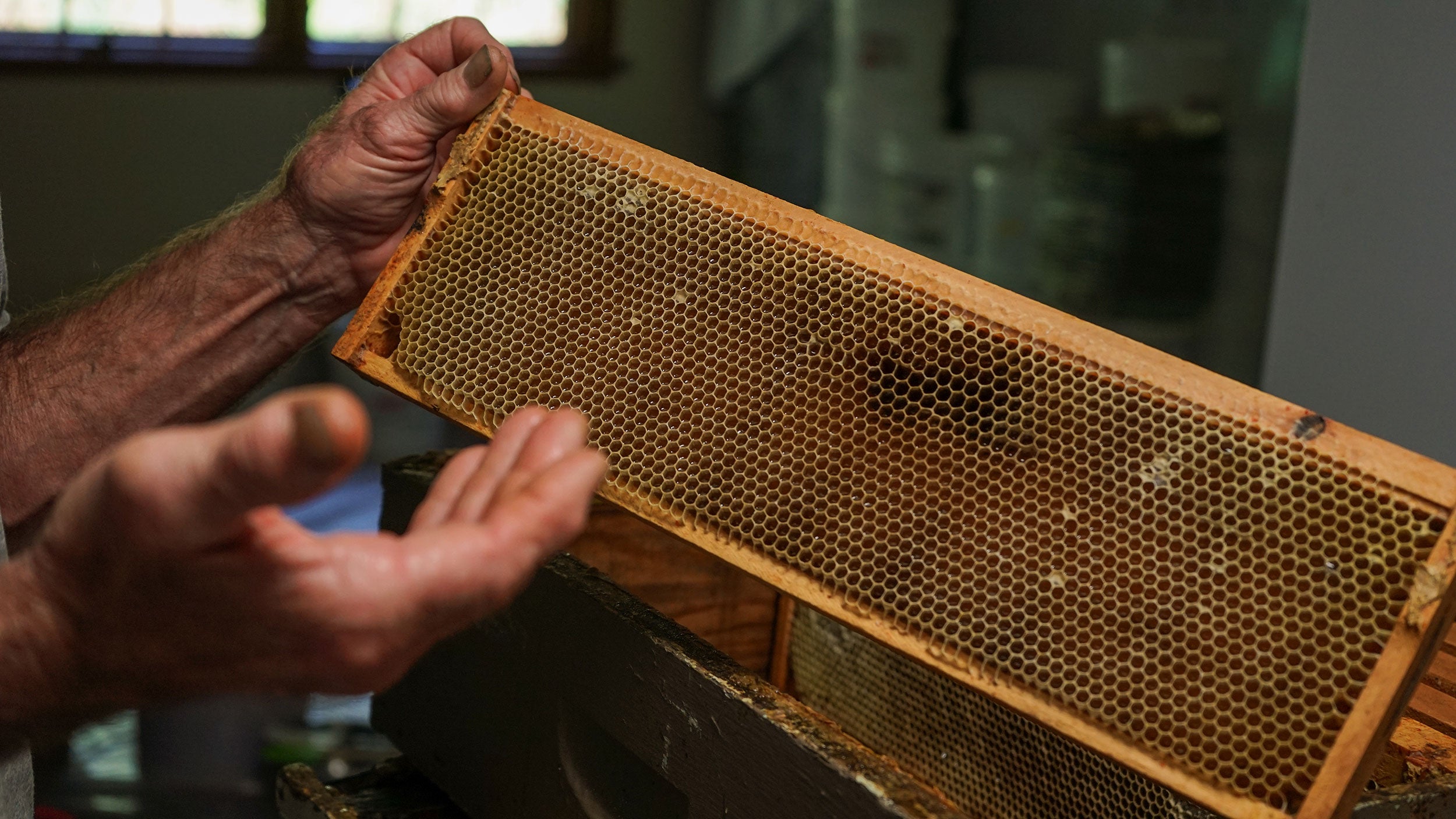

Right now, the Beltsville USDA-ARS national bee lab is set to close and disperse research groups closer to American agriculture, as part of a nationwide agency reorganization, though it is unclear what will happen to that location’s researchers after the announcement. For beekeepers like Myers, it would be a critical loss in monitoring brood disease and pests. Ohio is the top state in having samples tested and sent in by the state’s Apiary Inspectors, according to the Ohio organization.
Varroa mite infestation or not, the real sting is an information gap, made worse by mites that will not go away and reforms that risk sidelining bee science.
Searching for solutions
Technology can help capture what keepers cannot see.
“A very experienced beekeeper can go into a hive, open it, look, smell, listen and understand what is going on inside the hive in a pretty accurate way,” said Kanot from BeeHero.
His company has a sensor that collects information 24/7 without having to physically open the hive. The sensor goes in the middle of the colony and collects temperature, humidity, and sound vibration. It is collected by a light sensor and accelerometer, then analyzed with a machine learning algorithm.
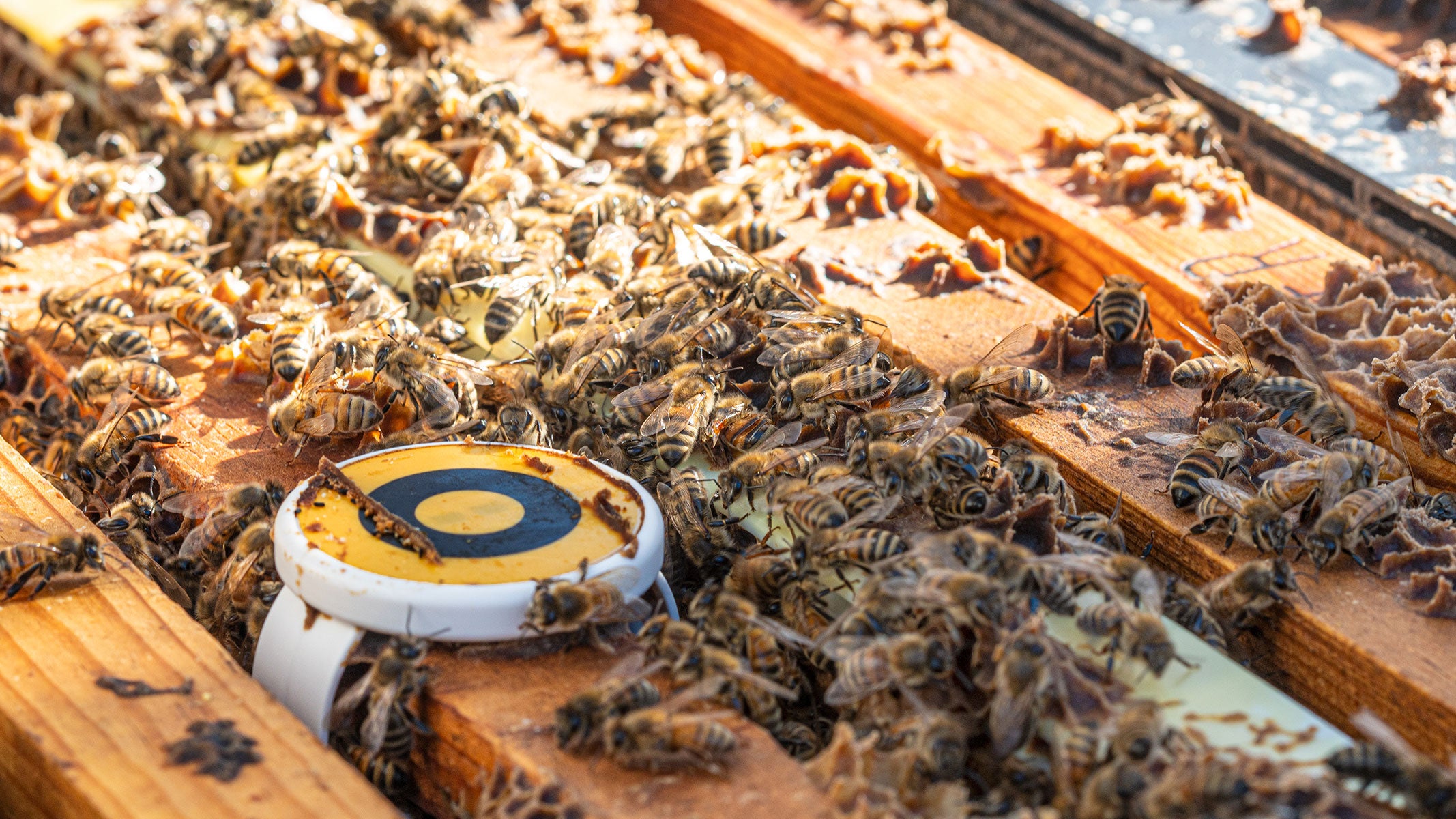

The sensors help identify where declining bee health exists, sent straight to an app. Whether treating Varroa or any other management decisions, beekeepers can act by “looking at the dashboard and understanding where the situation is worse and where they want to potentially start their treatment,” he said.
BeeHero has clients in all continental United States states, manages 300,000 hives, and collects 3 million data points a day. They are a part of an ecosystem of startups creating technology solutions to agriculture’s smallest players. Companies such as Beewise, Canetis, BeeSage, and BroodMinder all provide hive technology globally for pollination clients.
As a pollination services broker, BeeHero provides its beekeepers with free hive sensors that improve the efficiency of hives and give data to beekeepers and growers, who historically never had access to such insights. By measuring bee populations by the individual frame, not the hive, their protocol and metrics are taking management to the next level, dramatically increasing bee population accuracy.
“It can choose the right hives for the pollination job, bring the best hives into the orchards to provide the maximum value to our growers,” Kanot explained.
While tools like BeeHero’s sensors give beekeepers a clearer picture of hive health, adoption is still slow. Beekeepers are often cautious when adopting new technology, especially given the narrow margin between running a profitable operation and simply maintaining beekeeping as a hobby.
The median age of U.S. beekeepers is around 50, according to a Boston College study, and most prefer methods that rely on their own eyes, ears, and instincts.
The future of pollination will not be decided only by how well beekeepers manage mites. It will depend on whether researchers, policymakers and entrepreneurs can close the information gap before another wave of collapse sets the industry back again.
Jake Zajkowski is a freelance agriculture journalist covering farm policy, global food systems and the rural Midwest. Raised on vegetable farms in northern Ohio, he now studies at Cornell University.




